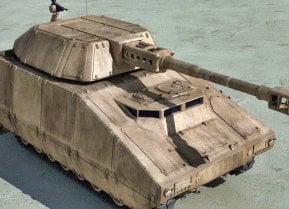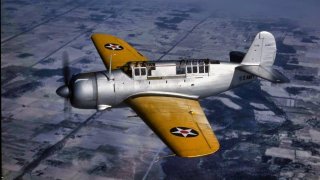The Remarkable Curtis SB2C Helldiver Is a World War II Legend
During WWII, by far the most successful Allied dive bomber was the Curtis SB2C Helldiver. It was a new design that would replace the Douglas SBD Dauntless dive bomber. Did the helldiver truly live up to its epithet?
During WWII, by far the most successful Allied dive bomber was the Curtis SB2C Helldiver. It was a new design that would replace the Douglas SBD Dauntless dive bomber. Did the helldiver truly live up to its epithet?
Curtiss SB2C Helldiver Early History and Specifications
The SB2C made her maiden flight on December 18, 1940, and officially entered into operational service with the U.S. Navy in December 1942. The plane was manufactured by the Curtiss-Wright Corporation, best known for making the P-40 Warhawk that was immortalized by the legendary American Volunteer Group (AVG) aka the Flying Tigers.
Specifications included a crew of two (pilot, radioman/rear gunner), a fuselage length of 36 feet 8 inches, a wingspan of 49 feet 9 inches, a height of 13 feet 2 inches, an empty weight of 10,547 pounds, and gross weight of 16,616 pounds. Max airspeed was 295 miles per hour, with an operational range of 1,165 nautical miles and a service ceiling of 29,100 feet. Armament consisted of two AN/M2 20mm cannons in the wings, two M1919 Browning .30 caliber machine guns in the rear cockpit, eight 5-inch High-Velocity Aircraft Rockets (HVAR; nicknamed “Holy Moses”), and a bomb payload of 2,500 pounds. Optionally, the plane could also carry four M2 “Ma Deuce” .50 caliber machine guns in pods installed on underwing hardpoints.
Operational Performance: Replacing a Beloved Legend
In the role of the replacement of the Douglas Dauntless, the Helldiver had some awfully big shoes to fill.
After all, the SBD (“Slow But Deadly” was the affectionate unofficial interpretation of that acronym) was not only genuinely beloved by her crews for being so easy to fly, she made history by (1) sinking the four Imperial Japanese Navy (IJN) aircraft carriers at the Battle of Midway, (2) sinking more Japanese shipping than any other Allied aircraft, and (3) being the only WWII bomber with a positive kill air-to-air kill ratio against enemy aircraft. Ironically, it was during that Battle of Midway that an omen of the SBD’s replacement by the SB2C took place (if semantics count as an omen, that is): as recounted by the late Gordon W. Prange in his bestselling book “Miracle at Midway,” IJN Capt. Mitsuo Fuchida – best known for leading the first wave of the Pearl Harbor attack – was standing on the deck of one of those four ill-fated carriers, the Akagi, when he heard a lookout scream the words “Hell divers!” (According to Google Translate, the literal Japanese translation of that phrase is ヘルダイバー/Herudaibā.)
In any event, the Helldiver was faster – by a differential of 40 mph – and better armed than the Dauntless, so after the Battle of the Philippine Sea, the U.S. Navy completed the transition to the newer warbird. But the proverbial new kid on the block (or flight deck, if you prefer) was a bit of a problem child, as explained by the Smithsonian’s info page:
“Numerous design problems, accidents, and the required corrections pushed delivery of the first production Helldiver back to June 1942 … The near-disastrous carrier trials in early 1943 were a continuation of the Helldiver’s problems. Landing gear failures and a characteristic bounce that prevented the tail hook from engaging with the cross-deck cable resulted in Helldivers being caught in flight deck barriers. Some SB2Cs experienced structural failures that included the loss of wings in steep dives or tails breaking off mid-air or at landing … As a result, crews came up with new names for the Helldiver. They nicknamed it the ‘Beast’ due to its size and handling qualities. Irreverent naval aviators and air crewman also called it an ‘S.O.B. 2nd Class,’ which was a profane play on the official Navy designation ‘SB2C’ and the Navy’s enlisted personnel ratings.”
Indeed, there are videos about the Helldiver titled “A Bomber So Bad It Took 800+ Changes to Fix” and “Curtiss SB2C Helldiver – The Worst and Final Navy Dive Bomber;” the former video notes that the plane actually helped trigger the downfall of Curtiss-Wright as an aircraft manufacturer, whilst the latter notes that the plane’s maladies prompted an investigation by the Truman Committee.
Nonetheless, the Helldiver went on to earn its fair share of battlefield laurels. Its two biggest moments of glory were contributing – in tandem with the Grumman TBF Avenger torpedo bomber – to the sinking of the IJN’s mightiest battleships, the Yamato and Musashi. Helldiver pilots scored six bomb hits on the former battlewagon and thirteen on the latter. The Helldiver would continue to serve for the remainder of the war, participating in engagements from Leyte Gulf to Okinawa.
Where Are They Now?
A total of 7,140 SB2Cs were built, with Italy being the plane’s last official user, retiring it in 1959. A total of nine Helldivers survive today, one each in museums in Thailand and Greece, with the remainder in the United States. Only one is currently airworthy – though a couple of others are in the process of being restored to airworthiness – courtesy of the Commemorative Air Force (CAF) West Texas Wing in Houston. A static display of the Helldiver is available for viewing by the Stateside museum-going public courtesy of the Steven F. Udvar-Hazy Center of the National Air and Space Museum in Chantilly, Virginia.
About the Author
Christian D. Orr is a prominent defense writer with over 800 published pieces . He is a former Air Force Security Forces officer, Federal law enforcement officer, and private military contractor (with assignments worked in Iraq, the United Arab Emirates, Kosovo, Japan, Germany, and the Pentagon). Chris holds a B.A. in International Relations from the University of Southern California (USC) and an M.A. in Intelligence Studies (concentration in Terrorism Studies) from American Military University (AMU). He has also been published in The Daily Torch and The Journal of Intelligence and Cyber Security. Last but not least, he is a Companion of the Order of the Naval Order of the United States (NOUS).


